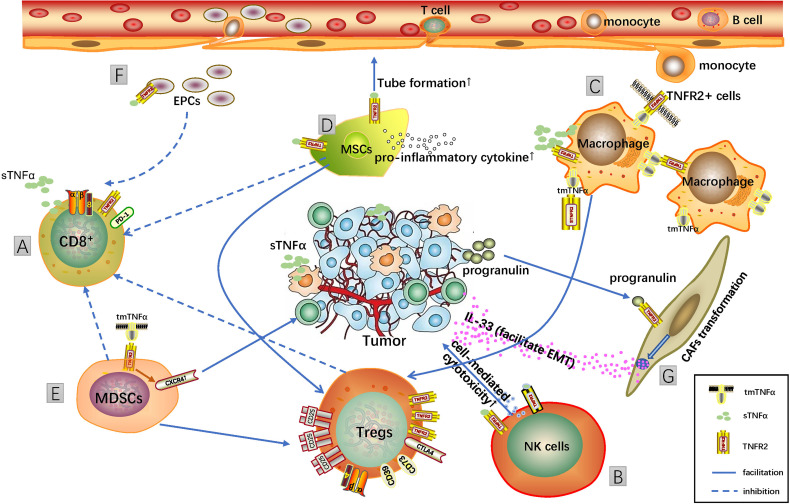Figure 1.
Targeting TNFR2 in different cells in the tumor microenvironment (TME). TME is an indivisible whole complexity, and targeting TNFR2 may influence different cells in it, thus leading to a cascade of reactions and reshaping the immune microenvironment, which achieves antitumor effects ultimately. (A) TNFR2 was the predominant TNF receptor on CD8+ effector T cells and required for the secretion of effector molecules and cytotoxic activity of CD8+ T cells. (B) Activation of TNF/TNFR2 pathway enhances NK cell cytotoxicity and IFNγ production. (C) Macrophages are the major producers of TNFα, and M2 macrophages were more potent in inducing Treg differentiation and proliferation. (D) TNFR2+ MSCs can suppress T-cell proliferation, activation, and pro-inflammatory cytokine production and at the same time the induction of active Tregs. (E) tmTNFα can induce CXCR4 expression in myeloid-derived suppressor cells (MDSCs) through the TNFR2-dependent pathway, which facilitates the recruitment of MDSCs to tumor tissue with the function of Treg induction and inhibition of T-cell function. (F) TNFR2+ EPCs can suppress T-cell proliferation. (G) Progranulin can promote the switch from fibroblasts to cancer-associated fibroblasts (CAFs) through the TNFR2 pathway. TNFR2-dependent secretion of IL-33 by CAFs enhances the migration and invasion of cancer cells.

